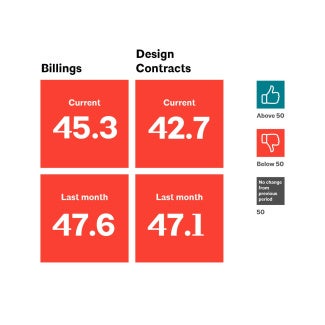ROI: Reducing operational costs
Out-of-pocket operational expenses add up fast and can account for up to 15% of a company’s total business expenses, creating a huge incentive for owners, tenants, and society to drive down costs with high-performance design.

Operational building expenses
Operational expenses are the out-of-pocket costs for maintaining and running a space, including cleaning, utilities, fixed costs, parking, roads and grounds, repair and maintenance, and real estate taxes. These costs add up fast. Operational costs typically account for 6% to 15% of a company’s total business expenses, creating a huge incentive for owners, tenants, and society to drive down costs via high-performance design and other strategies.*1

Early goal setting and integrating passive, climate-responsive design are key to delivering high-performance features that significantly reduce utility costs. Savvy owners and tenants can position these savings into avoided expenses that can be redirected into other projects and upgrades over the lifetime of the project.*2
Literature review completed by University of Washington’s Integrated Design Lab for AIA in 2020.
Realizing energy cost savings begins early in the design phase when building owners, architects, engineers, and consultants set energy goals and work collaboratively to integrate building systems.*1 Resources like the AIA’s 2030 Commitment and AIA Framework for Design Excellence can help stakeholders establish clear goals that can be parlayed into measurable savings.
Key goal-setting talking points
- Assessing sustainability through an established framework can be an effective exercise during goal setting and can reduce energy consumption.*2
- High-performance design features can significantly reduce utility costs through energy and water efficiency. For new construction, they can reduce operational costs by an average of 14% over five years and by 13% over five years for green retrofits and renovations.*3
References
- Mohawk College's Net Zero Energy and Zero Carbon Building - A Living Lab for High Efficiency and Renewable Energy Technologies in Buildings. Bhavsar, R., Cupido, A., & Arriaga, M.
- Building Information Modelling and Green Buildings: Challenges and Opportunities. Ayman M. I. Raouf & Sami G. Al-Ghamdi
- World Green Building Trends 2018 SmartMarket Report. Dodge Data & Analytics.
Reducing operational costs in high-performance buildings is often the result of an integrated design approach that incorporates passive and climate-responsive design, daylighting design, and further reduction of loads through equipment efficiency and occupant behavior.*1 The talking points below include strategies that work together to lower operating costs in high-performance buildings.
Key passive & climate-responsive design talking points
- Preventing heat gains on windows through envelope shading strategies, such as external shading or electrochromic glass, significantly cuts down on energy use and peak cooling load.*2
- Designing to increase natural daylighting can reduce electric light use significantly.*3
- Decoupling heating/cooling from ventilation using a dedicated outdoor air system (DOAS) can reduce mechanical cost by 23% annually.*4
- Using passive cooling techniques, such as night-flushing thermal mass, can reduce cooling energy consumption between 12% and 54%.*5, 6
- Operating a building under a mix-mode ventilation sequence can reduce energy consumption up to 31%.*7
- Using heat pumps can make the HVAC system highly efficient, with ground source heat pump efficiency being 5x more efficient.*8
References
- Heating, Cooling, Lighting: Sustainable Design Methods for Architects. Lechner, N.
- A Comprehensive Review on Passive Design Approaches in Green Building Rating Tools. Chen, X., Hongxing, Y., Lin, L.
- Zero Net Energy Case Study Buildings - Volume 2. Dean, E.
- Dedicated Outdoor Air Systems
- Controlled Natural Ventilation for Energy Efficient Buildings. Schulze, T., Eicker, U.
- Impact of passive cooling techniques on energy demand for residential buildings in a Mediterranean climate. Imessad, K., Derradji, L., Messaoudene, N.Ait, Mokhtari, F., Chenak, A., & Kharchi, R.
- Mixed-mode ventilation and air conditioning as alternative for energy savings: a case study in Beirut current and future climate. Daaboul, J., Ghali, K., & Ghaddar, N.
- Mohawk College's Net Zero Energy and Zero Carbon Building - A Living Lab for High Efficiency and Renewable Energy Technologies in Buildings. Bhavsar, R., Cupido, A., & Arriaga, M.
How to use these talking points
These talking points are intended for use in your conversations with clients, potential clients, civic leaders, vendors, contractors, and other architects. This helps demonstrate that architects are trusted partners in strengthening society, designing solutions, and transforming communities.
This is one chapter in AIA’s series ROI of High-Performance Design. Access the full resource below.
Explore the next chapter in ROI of High-Performance Design.



